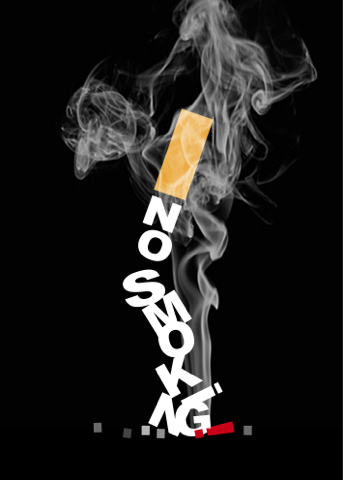On World No Tobacco Day, UN calls for ban on cigarette advertising
NEW YORK - Ahead of World No Tobacco Day, the United Nations health agency is calling on countries to ban tobacco advertising, including promotion and sponsorships, highlighting how such a marketing ban could greatly reduce tobacco use and save lives.
“Tobacco use ranks right at the very top of the list of universal threats to health yet is entirely preventable,” said the Director-General of the UN World Health Organization (WHO), Dr. Margaret Chan, in her message for the Day.
“Governments must make it their top priority to stop the tobacco industry’s shameless manipulation of young people and women, in particular, to recruit the next generation of nicotine addicts,” she added.
The theme for this year’s Day, which falls on 31 May annually, is: ‘ban tobacco advertising, promotion and sponsorship.’

Globally, tobacco use kills six million people each year, including 600,000 non-smokers exposed to second-hand smoke. That figure is expected to rise to eight million by 2030, with four out of five of these deaths occurring in low- or middle-income countries. In Afghanistan, 82 per cent of men and 17 per cent of women have tried tobacco, according to WHO data provided to it in a 2010 survey. No figures exist on daily consumption, and there are also no figures on tobacco use among youth.
Afghanistan signed the WHO Framework Convention on Tobacco Control (WHO FCTC) in 2004, and ratified it in 2010. The obligations of countries which are parties to the WHO FCTC include the introduction of a comprehensive ban of all forms of tobacco advertising, promotion and sponsorship within five years of the entry into force of the treaty for that party.
The international treaty was developed in response to the globalization of the tobacco epidemic. It was adopted in 2003 and now has 176 Parties, covering 88 per cent of the world’s population.
According the UN health agency, bans on advertising, promotion and sponsorship are one of the most effective ways to reduce tobacco consumption, with countries that have already introduced bans showing an average of seven per cent reduction in tobacco consumption.
"Research shows very clearly that one-third of youth experimentation with tobacco occurs as a result of exposure to tobacco advertising, promotion, sponsorship," said the Director of WHO’s Prevention of Non-Communicable Diseases Department, Douglas Bettcher. "Worldwide, 70 percent of young people aged 13 to 15 report regular exposure to tobacco advertising, promotion, sponsorship."
In Afghanistan, while tobacco advertising has been banned on television, radio, billboards and in the print media, the country is one of the few worldwide that still does not issue health warnings on cigarette packets. Smoking is banned in Afghan schools and universities, but not in government offices or restaurants.
A 2004 survey of schoolchildren in Kabul, Logar, Parwan, Wardak and Ningarhar provinces revealed that 50 per cent of children purchase cigarettes for themselves or their elders, without being refused because of their age. The survey also found that 50 per cent of the children polled said they were exposed to second-hand smoke.
The WHO reports that only 19 countries, representing just six percent of the world's population, have imposed complete bans on advertising. The agency also notes that while the prevalence of smokers in general has decreased worldwide, anti-smoking control measures are most successful in countries where bans are fully implemented, such as Uruguay, where the prevalence of smokers has decreased by 17 percent, and in Turkey, where it has decreased by 13 percent.
 UN
UN







